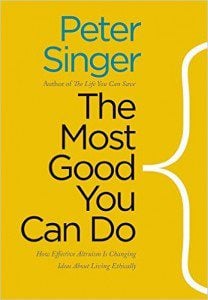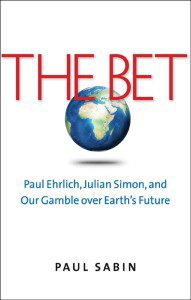Each year at the annual Unitarian Universalist General Assembly, one of highlights is always the Ware Lecture, which has been given since 1922. Past Ware Lecturers include Reinhold Niebuhr, Howard Thurman, Saul Alinsky, Kurt Vonnegut, Elaine Pagels, Mary Oliver, Karen Armstrong, and many other luminaries. If you are interested, you can read most of the archived transcripts online on the UUA’s website.
In 1966, The Rev. Dr. Martin Luther King, Jr. delivered a Ware Lecture titled “Don’t Sleep Through the Revolution,” which included these words to the gathered Unitarian Universalists:
there are some things in our nation and in our world to which I’m proud to be maladjusted. And I call upon you to be maladjusted and all people of good will to be maladjusted to these things until the good society is realized. I never intend to adjust myself to segregation and discrimination…. I never intend to adjust myself to economic conditions that will take necessities from the many to give luxuries to the few, and leave millions of people perishing on a lonely island of poverty in the midst of a vast ocean of prosperity…. Yes, I must confess that I believe firmly that our world is in dire need of a new organization – the International Association for the Advancement of Creative Maladjustment….
Today, almost five decades later, we are right to be maladjusted to a legal system that has failed to provide justice for Michael Brown, Tamir Rice, Eric Garner, and so many other people of color.
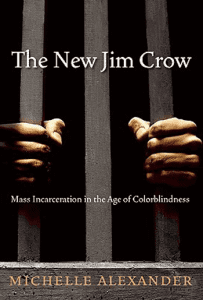 Relatedly, a colleague recently reminded me that as familiar as we are with the soaring rhetoric at the conclusion of Dr. King’s “I Have Dream” speech, most of us are much less familiar with rest of his speech that day, which includes this line: “We can never be satisfied as long as the Negro is the victim of the unspeakable horrors of police brutality.” (For more context on the strong parallels between the injustices that led to the Civil Rights Movements and our nation today, I strongly recommend Michele Alexander’s book The New Jim Crow: Mass Incarceration in an Age of Colorblindness.)
Relatedly, a colleague recently reminded me that as familiar as we are with the soaring rhetoric at the conclusion of Dr. King’s “I Have Dream” speech, most of us are much less familiar with rest of his speech that day, which includes this line: “We can never be satisfied as long as the Negro is the victim of the unspeakable horrors of police brutality.” (For more context on the strong parallels between the injustices that led to the Civil Rights Movements and our nation today, I strongly recommend Michele Alexander’s book The New Jim Crow: Mass Incarceration in an Age of Colorblindness.)
As some of you will recall, the forward to that important book is written by Dr. Cornel West, a contemporary prophetic voice for racial justice. In light of recent protests in Ferguson, Cleveland, New York City, and across our country, I was pleased to see that Dr. West will be the 2015 Ware Lecturer this June at the UUA General Assembly in Portland, Oregon. One of my favorite quotes from Cornel West is that “Justice is what love looks like in public.” Dr. West will likely invite us to reflect on what it means to be creatively maladjusted to injustice in the twenty-first century. We should never intend to adjust ourselves to conflicts between police and citizens that so quickly and unnecessarily escalate to the use of deadly force. Of course, the vast majority of police officers have good intentions, but they — like we — are caught in a broken system that is racially biased and that must be reformed.
Our second UU Principle calls for “Justice, equity and compassion in human relations.” And our second Source is the “Words and deeds of prophetic women and men which challenge us to confront powers and structures of evil with justice, compassion, and the transforming power of love.”
And while there are vital systemic changes we need to make reform our criminal justice system, in this post I 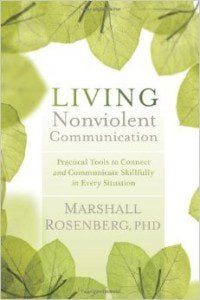 would like to share with you a framework for being creatively maladjusted to violence in your own life — a change we can begin to make immediately. The insights I would like to share are from the Center for Nonviolent Communication, founded by the psychologist Dr. Michael Rosenberg. My hope is to increase our awareness that when we find ourselves in conflict — or even when find ourselves responding with escalating violence to a situation, which can be verbal (such as raising our tone of voice) as well as physical, that we increasingly realize that there are healthier, more compassionate ways of being in the world for ourselves and for others.
would like to share with you a framework for being creatively maladjusted to violence in your own life — a change we can begin to make immediately. The insights I would like to share are from the Center for Nonviolent Communication, founded by the psychologist Dr. Michael Rosenberg. My hope is to increase our awareness that when we find ourselves in conflict — or even when find ourselves responding with escalating violence to a situation, which can be verbal (such as raising our tone of voice) as well as physical, that we increasingly realize that there are healthier, more compassionate ways of being in the world for ourselves and for others.
The three main steps in Dr. Rosenberg’s method of Nonviolent Communication is:
Observe what is actually happening in a situation…without introducing any judgment or evaluation….
State how we feel when we observe this action….
Say what needs of ours are connected to the feelings we have identified. (6)
As you can perhaps guess, this process can seem easier in theory than it is to practice. Most of us have a lot of difficulty observing without judgement or evaluation, especially if the situation is a conflict in which we are deeply enmeshed. And not all of us are in touch with our feelings, much less experienced at identifying the deep, often unconscious needs, that are underneath our feelings and the source of our strong reactions to certain people and conflicts.
Rosenberg’s books such as Nonviolent Communication and Living Nonviolent Communication have many specific examples, but for now, I’ll limit myself to giving you three (30-31):
|
|
|
|
|
|
|
|
This first step of “Observation without Evaluation” is about slowing down, taking responsibility for specifically naming what we objectively observe — trying as much as possible to bracket out subjective evaluations — and restraining ourselves from imputing motives and judgements on people that may be false. After Freud, psychologist have shown that we are unconscious of many aspects of our own motivations. So, most assuredly, we do not know the full extent of what is going on inside another person. Moreover, Freud also cautioned us to be aware of the ways that we unconsciously project our own feelings and repressions onto other people. And if you notice yourself having an exaggerated reaction to someone, that’s often a red flag that something in your own shadow side is being triggered beyond anything that person is doing.
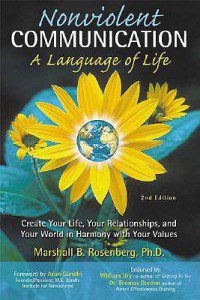 One of Rosenberg’s best tips for taking responsibility for your subjective perspective is not only the classic advice of using “I-statements,” but also to make sure the pronoun “I” also follows the word “because.” For example, instead of saying, “I feel angry because you_______,” say, “I feel angry because I________” (P111). That is, I feel angry, not only because you are doing “x,” but also because I need to feel more appreciated/empowered/safe or because I need to feel less anxious/alone/overwhelmed, etc.
One of Rosenberg’s best tips for taking responsibility for your subjective perspective is not only the classic advice of using “I-statements,” but also to make sure the pronoun “I” also follows the word “because.” For example, instead of saying, “I feel angry because you_______,” say, “I feel angry because I________” (P111). That is, I feel angry, not only because you are doing “x,” but also because I need to feel more appreciated/empowered/safe or because I need to feel less anxious/alone/overwhelmed, etc.
To help reach that point of insight, step two is to name the emotional elephant in the room. And if being in touch with your emotions is not your strong suit, you can go a long way in the right direction with what some psychologists call the four basic emotions. Look inside yourself and see if you are feeling mad, sad, glad, or bad. (Bad basically means scared…but scared doesn’t rhyme with mad, sad, and glad, so we say bad!)
I first learned a version of this practice more than a decade ago, and I have repeatedly experienced the palpable shift to a deeper register that can happen when communication moves from shouting interpretive judgements back and forth to naming the emotional elephants in the room. If even one person stops armoring themselves with defensive rationalizations and allows themselves to be vulnerable enough to name “I feel really scared” or “I feel really sad,” then there is an opening in which transformation suddenly has a chance to take place.
At this point, I should mention that my favorite part of Rosenberg’s middle step is his description of the ironically violent evolution many of us go through in becoming adept at emotional literacy. The most important part, of course, is the initial insight of realizing that you don’t have to be responsible for other people’s feelings. Rosenberg calls that insight liberation from “emotional slavery” (57). Unfortunately, with the zeal of the convert, many of us pass through an initial obnoxious stage in which you tend to hear not-quite-fully-nonviolent exchanges such as “That’s your problem! I’m not response for your feelings” (59)! Overtime, as we reach a healthier differentiation from others, we learn to express our emotional liberation more compassionately and from a place of inner freedom.
Now, I mentioned earlier that there is often a profound shift that happens when a conflict moves from interpretation to feelings. But to have the greatest chance of lasting change, you need the third and final step of naming the need underneath your feelings and at the root of the conflict. A classic example of why this final step is important is the spouse who asked her partner to spend less time at work: “Three weeks later, he responded by announcing that he signed up for a golf tournament!” She should’ve said, “I would like [you] to spend at least one evening a week at home…” (68). Or, “I’m feeling lonely, and I need us to spend more time together as a family.” Failing to articulate the underlying need often results in passive-aggression and miscommunication.
All this being said, if you begin experimenting with some of these techniques of Nonviolent Communication, you will find that it is most difficult to practice with those we are closest with (120). As in a proverb that is particularly resonate during the holidays, “Our families can most easily push our buttons because they are the ones that sewed the buttons on in the first place!” But naming our feelings and our underlying needs are important steps in working toward being, as Buddhists say, increasingly filled with loving-kindness, being peaceful and at ease in more times and more places.
And if you suddenly wake up in the midst of falling into a habitual pattern, especially with those you love, that is falling short of nonviolent communication, I invite you to stop and say to yourself “W.A.I.T.!” W.A.I.T. stands for “Why Am I Talking?!” Stop. Wait. Take a few breaths. Move away from the source of conflict if you need to. But then challenge yourself to be vulnerable enough to reengage and experiment with Nonviolent Communication: observing without judgement, naming the emotional elephant in the room, and looking inside yourself to discern the real need underlying the conflict (P112).
Even as we must continue the struggle to make systemic changes in our society, may we also make the changes we can within ourselves. In so doing, may we each do our part in hastening the day when we may lay down our burden, lay down our sword and shield, and study war no more.
*Most of the parenthetical citations are to Marshall Rosenberg’s 2003 book Nonviolent Communication (2nd Edition). The two with the letter “P” infant of the page number refer to his 2012 book Living Nonviolent Communication.
The Rev. Dr. Carl Gregg is a trained spiritual director, a D.Min. graduate of San Francisco Theological Seminary, and the minister of the Unitarian Universalist Congregation of Frederick, Maryland. Follow him on Facebook (facebook.com/carlgregg) and Twitter (@carlgregg).
Learn more about Unitarian Universalism:
http://www.uua.org/beliefs/principles



